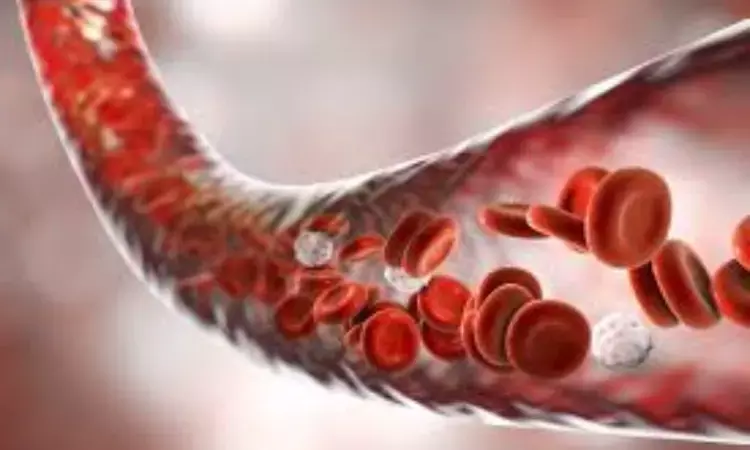- Home
- Medical news & Guidelines
- Anesthesiology
- Cardiology and CTVS
- Critical Care
- Dentistry
- Dermatology
- Diabetes and Endocrinology
- ENT
- Gastroenterology
- Medicine
- Nephrology
- Neurology
- Obstretics-Gynaecology
- Oncology
- Ophthalmology
- Orthopaedics
- Pediatrics-Neonatology
- Psychiatry
- Pulmonology
- Radiology
- Surgery
- Urology
- Laboratory Medicine
- Diet
- Nursing
- Paramedical
- Physiotherapy
- Health news
- Fact Check
- Bone Health Fact Check
- Brain Health Fact Check
- Cancer Related Fact Check
- Child Care Fact Check
- Dental and oral health fact check
- Diabetes and metabolic health fact check
- Diet and Nutrition Fact Check
- Eye and ENT Care Fact Check
- Fitness fact check
- Gut health fact check
- Heart health fact check
- Kidney health fact check
- Medical education fact check
- Men's health fact check
- Respiratory fact check
- Skin and hair care fact check
- Vaccine and Immunization fact check
- Women's health fact check
- AYUSH
- State News
- Andaman and Nicobar Islands
- Andhra Pradesh
- Arunachal Pradesh
- Assam
- Bihar
- Chandigarh
- Chattisgarh
- Dadra and Nagar Haveli
- Daman and Diu
- Delhi
- Goa
- Gujarat
- Haryana
- Himachal Pradesh
- Jammu & Kashmir
- Jharkhand
- Karnataka
- Kerala
- Ladakh
- Lakshadweep
- Madhya Pradesh
- Maharashtra
- Manipur
- Meghalaya
- Mizoram
- Nagaland
- Odisha
- Puducherry
- Punjab
- Rajasthan
- Sikkim
- Tamil Nadu
- Telangana
- Tripura
- Uttar Pradesh
- Uttrakhand
- West Bengal
- Medical Education
- Industry
High levels of lipoprotein(a) and hsCRP tied to increased risk of cardiovascular events

China: In coronary artery disease (CAD) patients undergoing PCI, a high level of lipoprotein(a) is associated with worse outcomes, and in those with concomitant high-sensitivity C-reactive protein (hsCRP), the association might be more substantial, a recent study has stated.
The findings, published in the journal Atherosclerosis imply that simultaneous evaluation of hsCRP and Lp(a) may help identify high-risk patients for targeted intervention in clinical utility.
There needs to be clarity on the effects of hsCRP on Lp(a)-associated cardiovascular risk in CAD patients undergoing percutaneous coronary intervention (PCI). Deshan Yuan, Chinese Academy of Medical Sciences, Peking Union Medical College, Beijing, PR China, and colleagues conducted the study to examine the independent and combined Lp(a) and hsCRP association with cardiovascular events in this particular population in a prospective cohort study.
The study included 10,424 patients with both Lp(a) and hsCRP measurements. To investigate the relationship between hsCRP, Lp(a), and adverse cardiac and cerebrovascular events (all-cause death, MACE, ischemic stroke, myocardial infarction, and revascularization), the researchers performed Cox proportional hazards models, and Kaplan-Meier analysis was performed.
The study led to the following findings:
- 20.5% of MACCE occurred during five years of follow-up.
- Increased levels of Lp(a) and hsCRP were associated with increased risks of MACCE.
- There might be a remarkable interaction between Lp(a) and hsCRP.
- The reearchers observed a significant higher risk of MACCE with Lp(a) 15–29.9 mg/dL (HR: 1.18) and Lp(a) ≥30mg/dL (HR: 1.20) in the setting of hsCRP≥2mg/L, when hsCRP was <2 mg/L with Lp(a) 15–29.9 mg/dL (HR: 0.94) and Lp(a) ≥30 mg/dL (HR: 1.12) such association was attenuated
- Patients with a dual elevation of these two biomarkers had a significantly higher MACCE risk compared with the reference group (Lp(a) < 15 mg/dL and hsCRp<2 mg/L) when Lp(a) and hsCRP were combined for risk stratification.
Increased Lp(a) and hsCRP are individually associated with an increased risk of cardiovascular events. In patients with higher hsCRP concentrations, the association between Lp(a) and cardiovascular risk might be stronger.
The findings led researchers to conclude that concurrently evaluation of Lp(a) and hsCRP may help risk stratification.
Reference:
Dr. Manav Aggarwal is a Interventional Cardiologist,Cardiologist and General Physician in Darya Ganj, Delhi and has an experience of more than 10 years in these fields. Dr. Manav Aggarwal practices at Sanjeevan Hospital in Darya Ganj, Delhi.
Dr Kamal Kant Kohli-MBBS, DTCD- a chest specialist with more than 30 years of practice and a flair for writing clinical articles, Dr Kamal Kant Kohli joined Medical Dialogues as a Chief Editor of Medical News. Besides writing articles, as an editor, he proofreads and verifies all the medical content published on Medical Dialogues including those coming from journals, studies,medical conferences,guidelines etc. Email: drkohli@medicaldialogues.in. Contact no. 011-43720751


